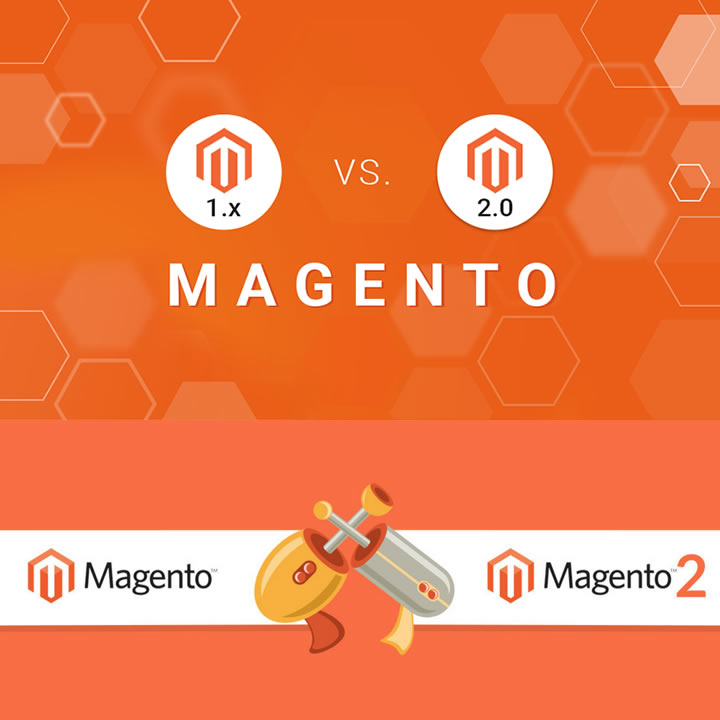Magento 1 vs Magento 2
Many thousands of online retailers use Magento, one of the top eCommerce systems, daily. It came out in 2008, and its replacement came out in 2015. After the release of Magento 2, moving to it has become mandatory for owners of Magento 1 stores.
Speed and Effectiveness
Magento’s speed was often criticized as being excessively sluggish. The average page load time in Magento 1 used to be over 2 seconds, which did more damage than good for e-commerce businesses.
On the homepage, product pages, and checkout, Magento 2 was able to reduce the average loading time by around 50% and 38%, respectively. It became accessible mostly as a result of the platform’s addition of new technologies.
Moreover, many prefer to turn to Magento eCommerce consulting if they do not understand which environment to choose.
You do not have to wait for the complete page to load in Magento 2 to see the page.
A built-in module to clean the cache has been introduced by the platform; before, a third-party addition was required. Moreover, Magento 2 provides facilities for automatic image optimization on the server. As a result, Magento 2 and Magento 1 function quite differently.
Support
With the tools available in 2009, Magento 1 was created.
By June 2020, Magento will no longer be upgrading and releasing security updates and fixes for Magento 1.
Magento 2, in contrast, covers all current advancements in online commerce and business, including voice search, speed and performance enhancements, UI/UX, AI, and lean application footprint.
The development team is adding new features like code automation, comprehensive reporting, PWA integration, and page builder.
Technical Evaluation
The versions of Magento are also developing more quickly than technology. The most recent Magento version outperforms the earlier one in terms of technology. Modern technologies with enhanced speed and security are included in the Magento 2 edition.
Using the obsolete technology, Magento 1 was noticeably slower.
Yet because of the adoption of cutting-edge technology that has improved its speed, Magento 2 is now quicker. Some of the technologies used in the most recent version of Magento include Varnish, Composer, RequireJS, Knockout.js, and Symphony.
Extensions
There are a ton of extensions available for Magento 1. The latter presented the problem of extensions clashing. Many extensions make an effort to reinvent the same functionality. Manual labor is required to solve the issue, which takes time and costs money.
Rather than replacing code, Magento 2 plugins allow code blocks to coexist with one another. Magento 2 uses the most recent technologies, including Require.js, CSS3, and HTML5. This update is affordable and simple to do, as is the installation of new extensions.
Security
Consumers are very worried about the security of their data and are hesitant to make purchases from unreliable e-commerce sites. There will be more attacks that target vulnerabilities found after the release of the most recent security patch since Magento 1’s official support is about to cease.
On the other side, Magento 2 features strong security and stability in addition to better performance. Since password hashing techniques (SHA-256) have been improved, passwords are now more resistant to dictionary-type assaults.
Mobile-Friendliness
By 2022, mobile retail revenues will total $432 billion. You need a mobile website that offers an excellent user experience if you want to participate in mobile retail.
Magento 1 didn’t support responsive design by default, but Magento 2 fixed the problem.
Nowadays, mobile optimization is simpler than ever before. You can even build a native mobile app that has the same look and feel as your website. Thanks to the PWA Studio, the latter was made feasible.
Dashboard Layout
The admin area of Magento 2 is easy to use and packed with features.
The admin panel’s components are all easily navigable and the data may be quick. The panel provides the shop with greater management. The platform contains an attractive dashboard that provides a thorough overview of all shopping-related data.
The admin interface for Magento 1 is difficult to use and offers few functions.
Conclusion
Last but not least, since you are currently here, you must already be aware of all the benefits of upgrading to Magento 2 right now. During the last eight years, Magento 1 has accomplished great things.
With the help of this platform, Magento gained a solid foothold in the SMB eCommerce market and gained recognition worldwide. Yet, owing to improvements to native functionality and the availability of more than 350 extensions, Magento 2 has the lead in this battle.

